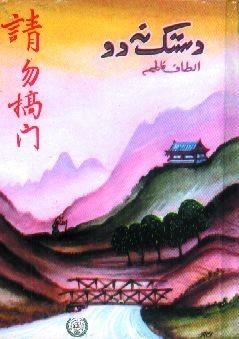
Dastak Na Do was also our first exposure to South Asian women who weren't as docile or didn't conform to gender identities imposed on them

Thirteen is a daunting time in a boy’s life, especially when most of it is spent within the confines of an all-boys school. Academically speaking, it’s marked by our transition from Middle School to O Levels. We’re told we’ve graduated from being school boys to finally becoming young men.
For us "young men", becoming O Level students meant having a license to include the national treasure aka the behen-waali-gaali into everyday lexicon.
Amidst the life-altering effects of testosterone and the potentially scarring impact of a Talibanised Pakistan, us 13 year-olds were introduced to Altaf Fatima’s Dastak Na Do. Urdu despite being our mother-tongue was treated as a second-rate subject in comparison to English. Ironically, it was in Dastak Na Do and not in Shakespeare’s Macbeth that we found characters who sounded as belligerent, self-conscious, and confused as us.
The male protagonist in Dastak Na Do wasn’t a macho and manly army officer. Rather the army officers happened to be the most inconsequential characters of Fatima’s plot. Instead, Dastak Na Do’s (anti) hero was Safdar Yasin or China-Man, who lacked the self-confidence to express his love, valued listening to women over deafening them with his bravado, and chose not to impose himself on the woman he loved. He like most of us also internally struggled with being masculine, yet he tried his best to put up a front.
Dastak Na Do was also our first exposure to South Asian women who weren’t as docile or didn’t conform to gender identities imposed on them. Of course, we knew many strong women in our personal lives, but we never thought of them as whole; perfect and imperfect. In Fatima’s novel, Gaiti Ara was more rambunctious, spirited, and fearless than us boys. Ama Begum like our grandmothers wore the most elegant saris, yet she also supported an unconventional familial structure where her daughter and not her sons became her pillar of support in old age. We were exposed to an older sister (not an older brother) who despite having a stable family life, chose to stray away from her marriage because it was simply not as exciting.
We tacitly learned that women like men also thought about sex, acted on their impulses, and could choose to turn down relationships if they wanted to. Choosing to do so, didn’t make them promiscuous whores as we were used to believing. The treatment of women by men in Dastak Na Do was a sharp contrast from the manner in which we would treat the women who taught us every day.
Most importantly perhaps, Dastak Na Do brought to life stories about pre-partition and its aftermath to life. My peers and I represent the last generation of Pakistanis who heard first-hand accounts of pre-partition India from our grandparents. Fatima’s story was among the rare few, which, at age 13, constructed characters who had names like ours and the same imperfections we struggled with. Those stories which centred on religion, identity, culture, socio-economic divide, and heritage are no longer the bedtime tales most Pakistani children sleep with.
Also read: The power of quiet
It does not escape me for a second that I would not have reflected on the impact of Dastak Na Do had it not been as deeply tied with experiences during my adolescence. I also realise that with the passing of Altaf Fatima and my grandparents’ generation, our collective memory and heritage as South Asians -- and not an Arab Muslim nation -- is disproportionately threatened.
Urdu periods were always the last on Mondays and Wednesdays. We eagerly awaited the bell to ring, to rush out and to be done with the stories of Gaiti Ara and China Man, ignorant to what they signified. Sadly, that has become a euphemism for how we treat Urdu literature, our oral histories, and the stories they have to tell.